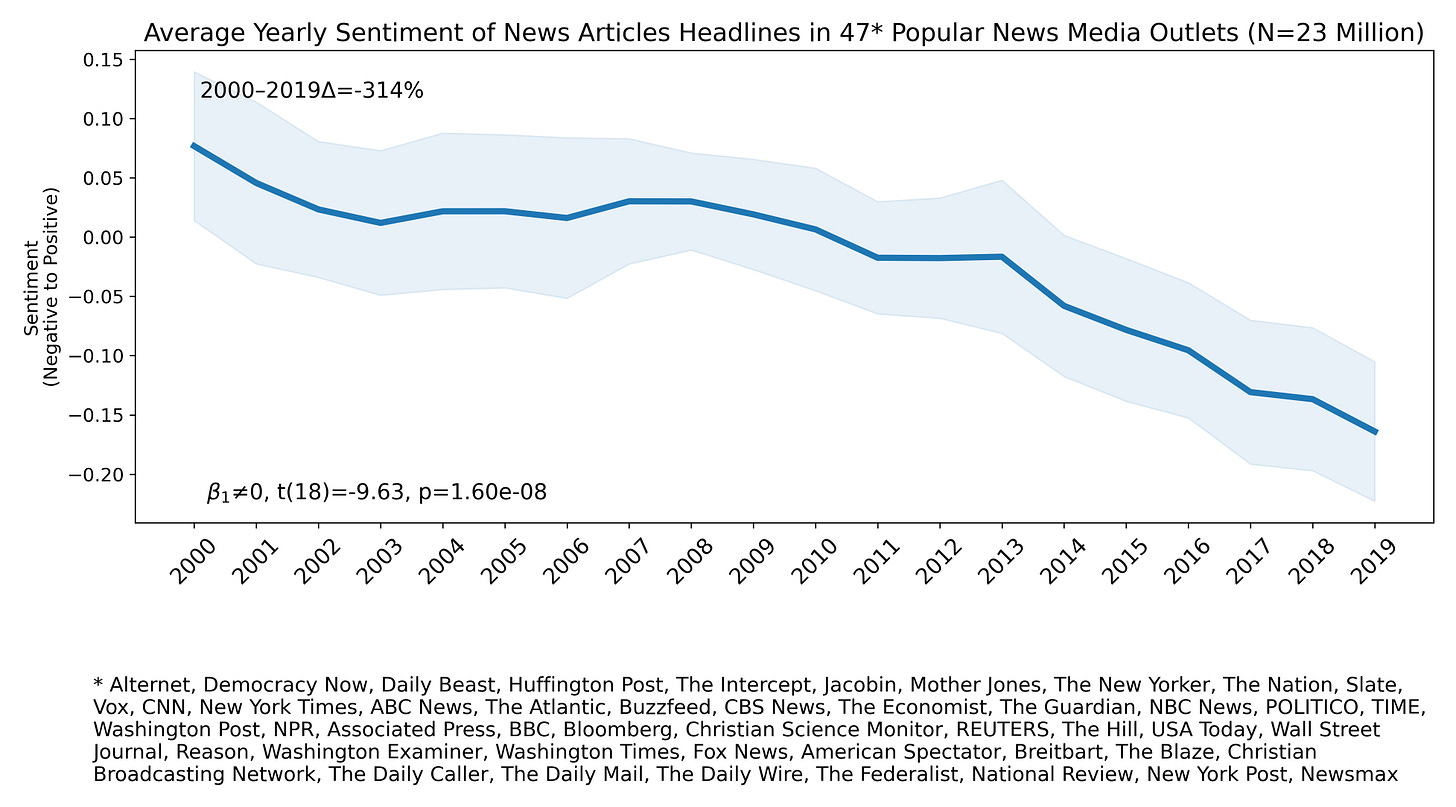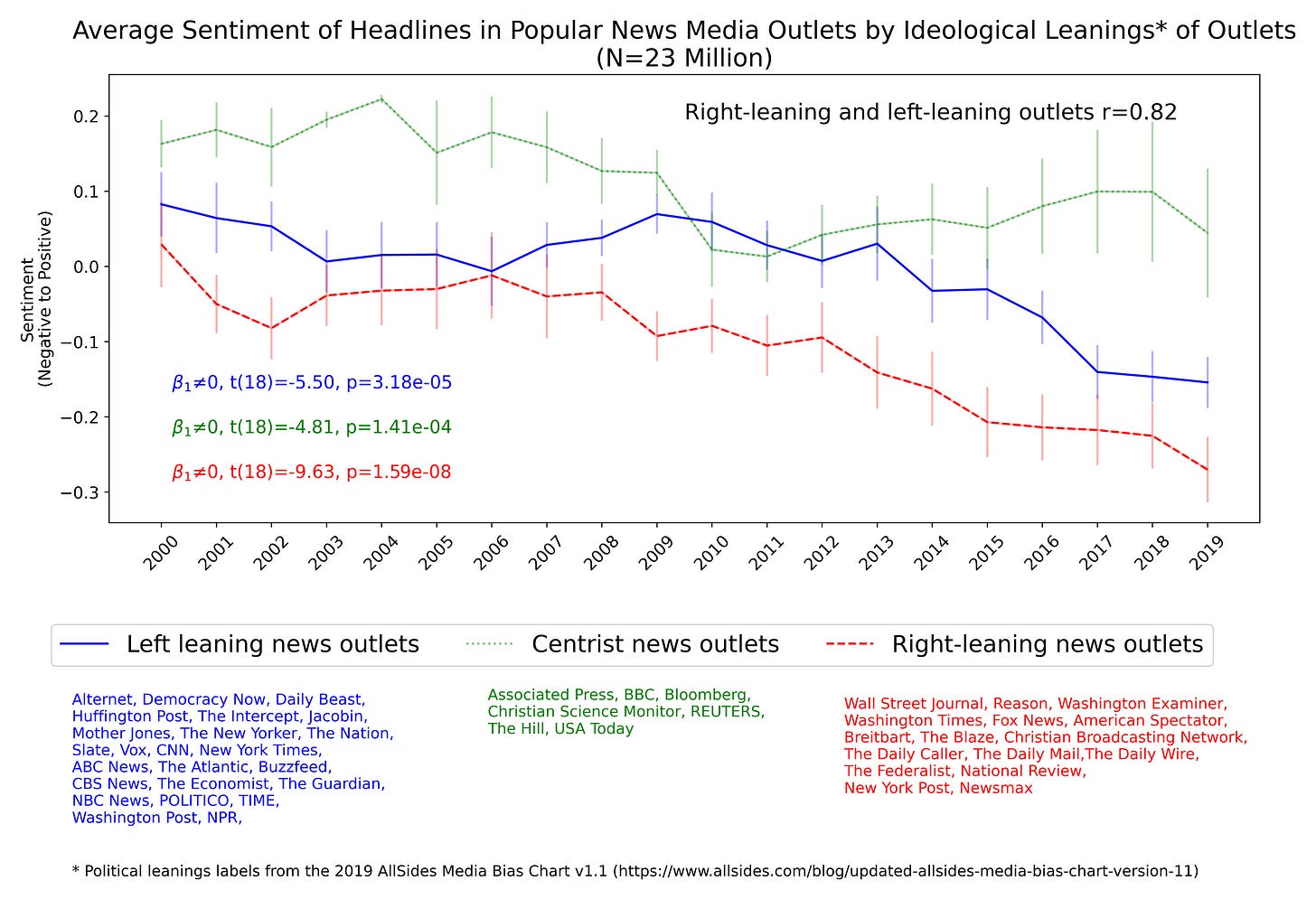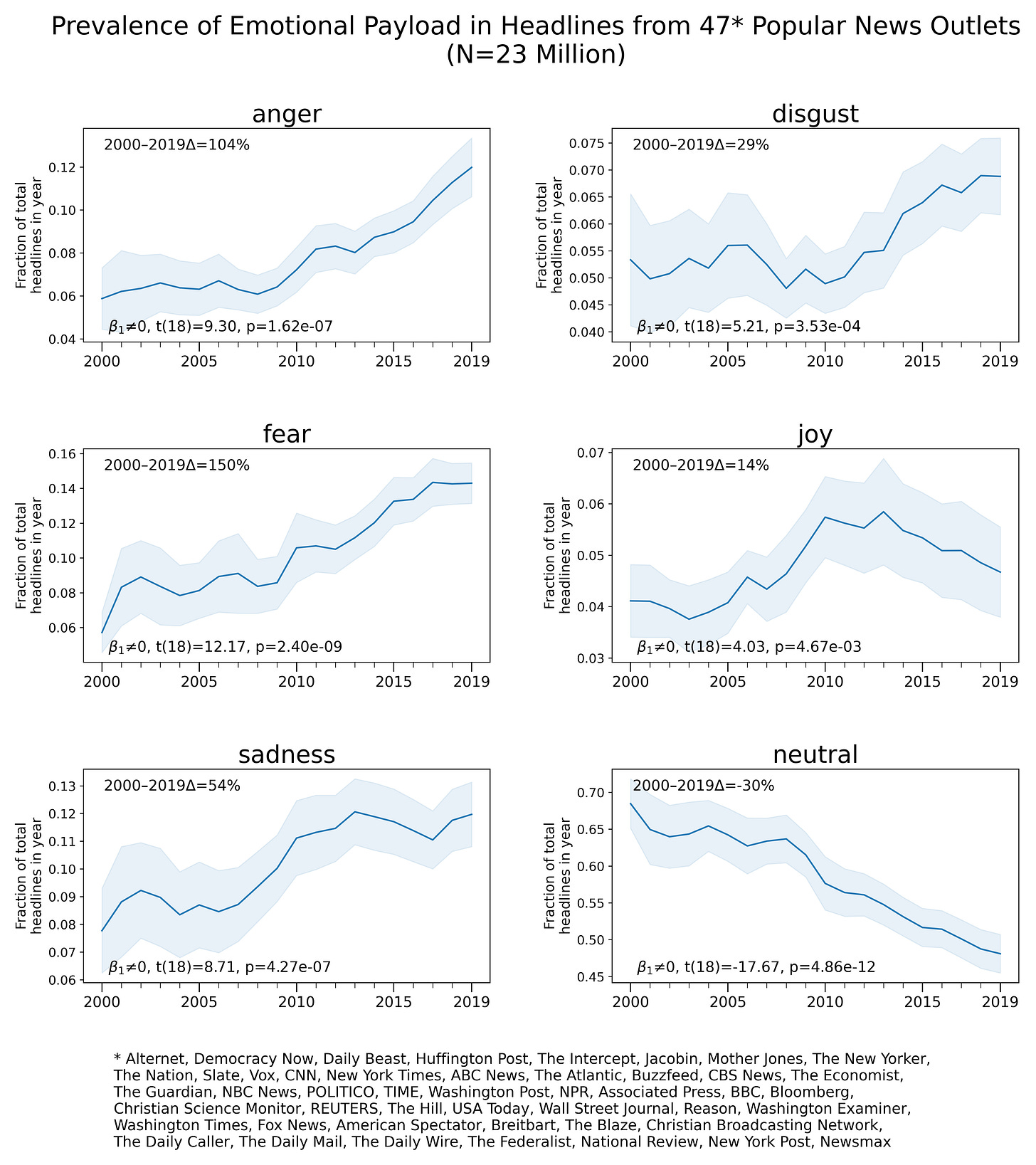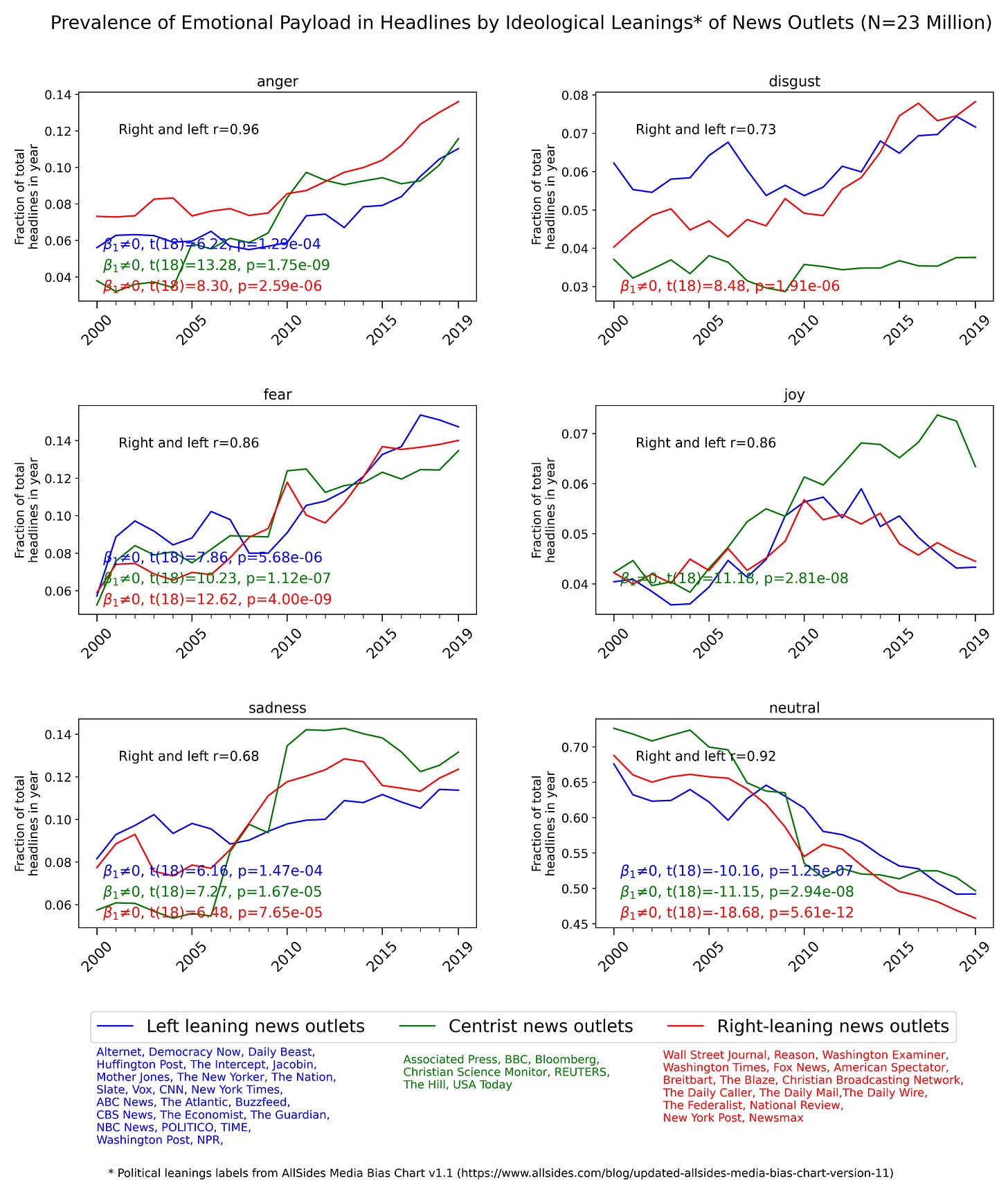Introduction
I have recently published a paper where we describe a chronological (2000–2019) analysis of sentiment and emotion in 23 million headlines from 47 news media outlets popular in the United States. We used Transformer language models fine-tuned for detection of sentiment (positive, negative) and emotions (anger, disgust, fear, joy, sadness, neutral) to automatically label the headlines.
Results
Results show an increase of sentiment negativity in headlines across written news media since the year 2000.

Headlines from right-leaning news media have been, on average, consistently more negative than headlines from left-leaning outlets over the entire studied time period.

The chronological analysis of headlines emotionality shows a growing proportion of headlines denoting anger, fear, disgust and sadness and a decrease in the prevalence of emotionally neutral headlines across the studied outlets over the 2000–2019 interval.

The prevalence of headlines denoting anger appears to be higher, on average, in right-leaning news outlets than in left-leaning news media. Emotionally neutral headlines have been consistently decreasing across the entire news media ideological spectrum.

Conclusions
The results of this work show an increase of sentiment negativity in headlines across news media outlets popular in the United States since at least the year 2000. The prevalence of headlines denoting anger, fear, disgust and sadness has also increased during the 2000–2019 interval. Within the same temporal period, the proportion of headlines with neutral emotional valence has markedly decreased across the entire news media ideological landscape.
The higher prevalence of headlines denoting negativity and anger in right-leaning news media is noteworthy. Perhaps this is due to right-leaning news media simply using more negative language than left-leaning news media to describe the same phenomena. Alternatively, the higher negativity and anger undertones in headlines from right-leaning news media could be driven by differences in topic coverage between both types of outlets.
An important question raised by this work is whether the sentiment and emotionality embedded in news media headlines reflect a wider societal mood or if instead they just reflect the sentiment and emotionality prevalent or pushed by those creating news content. Financial incentives to maximize click-through ratios could be at play in increasing the sentiment polarity and emotional charge of headlines over time. Conceivably, the temptation of shaping the sentiment and emotional undertones of news headlines to advance political agendas could also be playing a role.
We hope that future research throws light on the potential psychological and social impact of public consumption of news media diets with increasingly negative sentiment and anger/fear/disgust/sadness undertones embedded within them.




Hey i believe they are the intuitive ideas of there paid suport. Whether or not its damageing to a country as a whole or not. Non bais media is what any country should shiver for but the people in the US are geting more and more censored tords a more progressive style of ideology. Just what i have learned. Oh and thank nytimes i found you in there artical about Right Wing Gpt. Your awsome